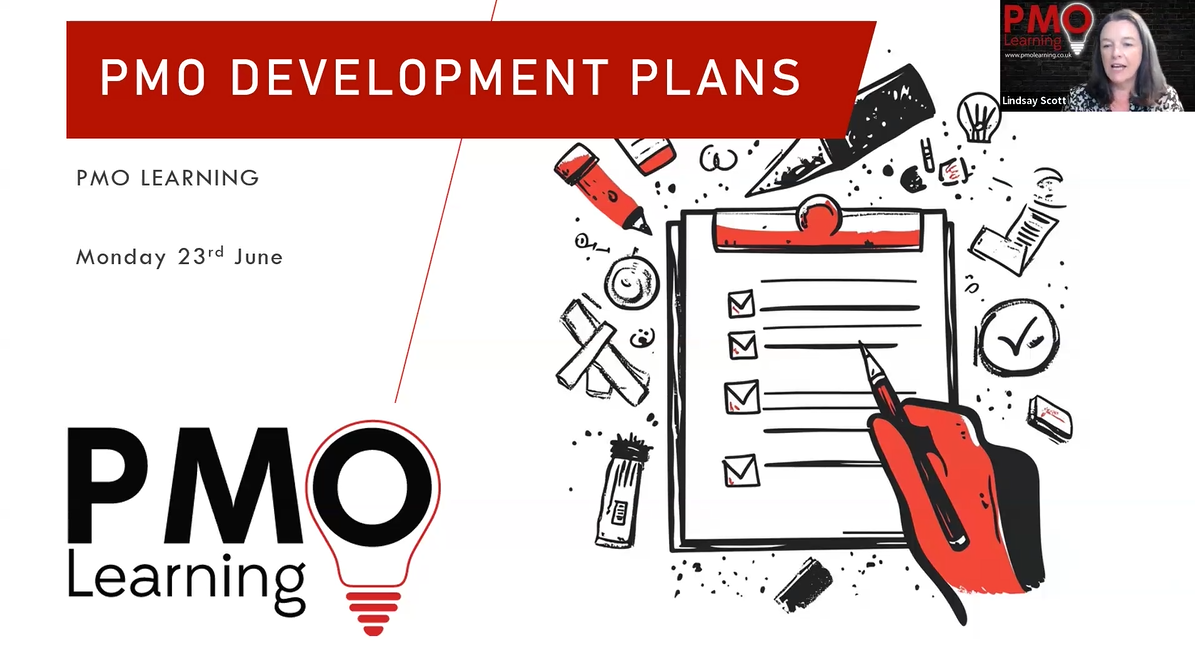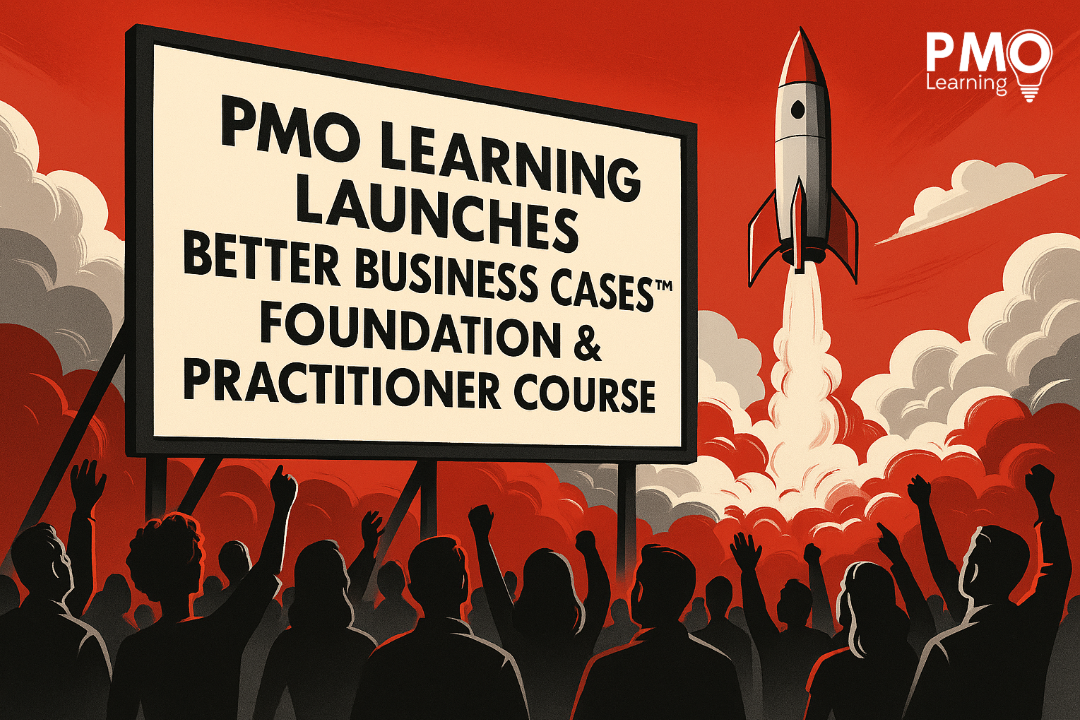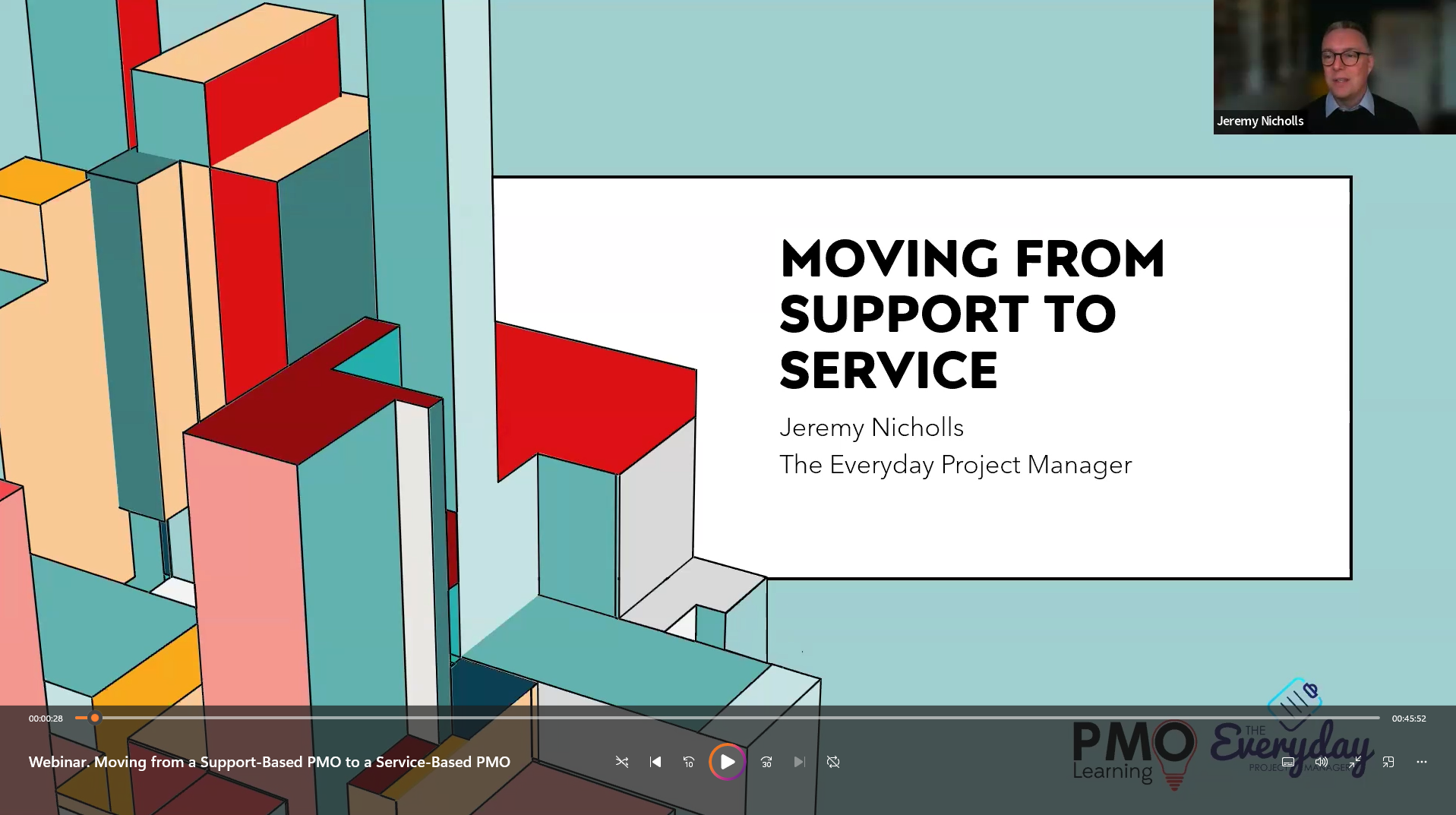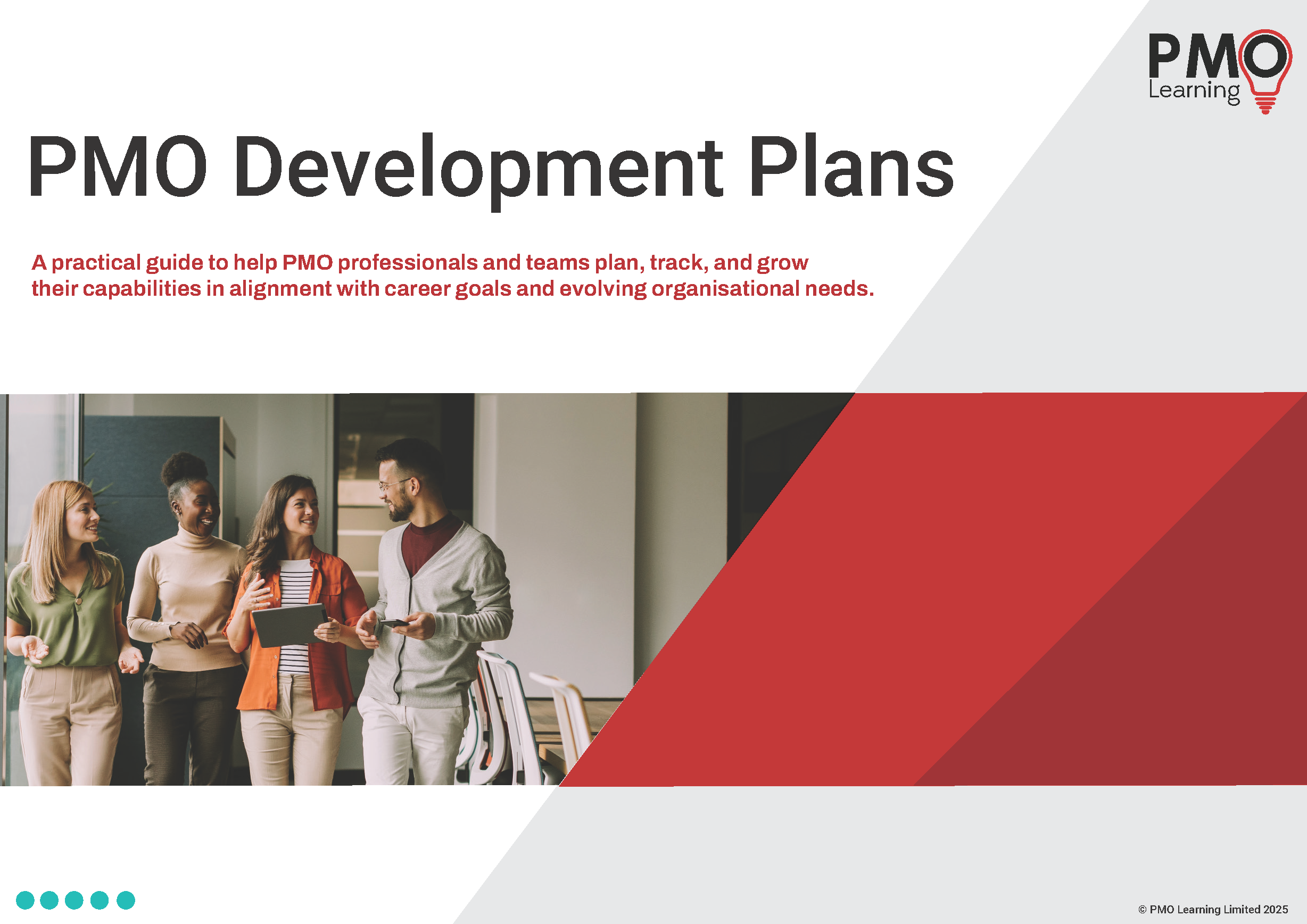What is a PMO?
If you’ve found PMO Learning, chances are you’re already familiar with what a PMO is.
PMO can mean different things to different people and organisations so we wanted to share what PMO Learning means when we say PMO.
At the highest level, a PMO is a business function with two primary aims:
- To help the businesses in the decision-making process around the projects and programmes they run, and;
- To help businesses get better at running projects and programmes by supporting the increase of capability required by the organisation to deliver projects and programmes more successfully.
There are other aims and reasons why PMOs exist – but ultimately its these two that have the greatest impact when a great PMO does its job well.
The acronym itself – PMO – can also mean different things.
In Getting Started with PMO Learning, we start at the beginning and highlight what those are.
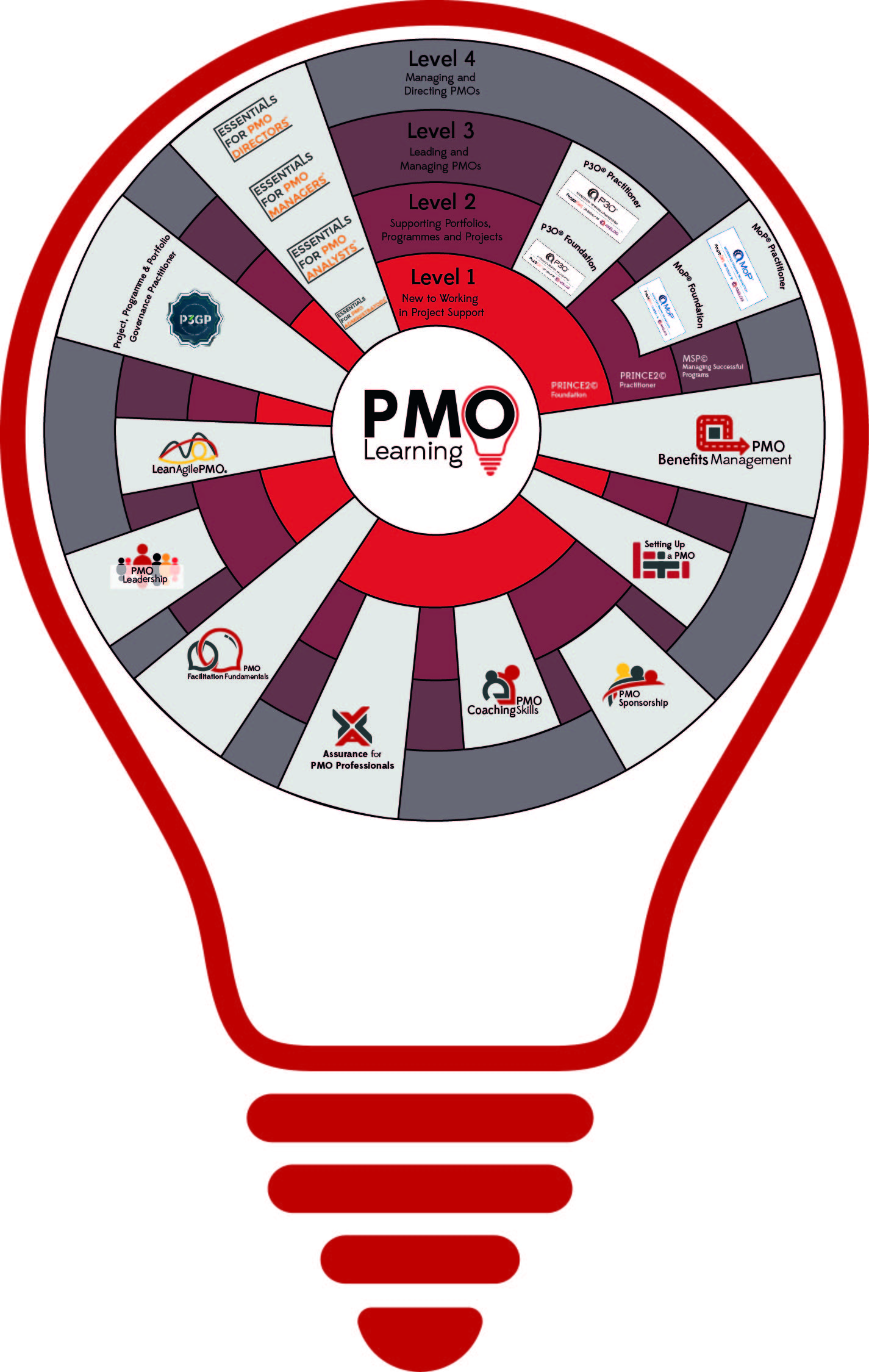

Project Management Office
A Project Management Office (PMO) is one which primarily supports projects. There are a couple of different types of Project Management Offices: The first is that a Project Management Office is set up to support ALL the projects in an organisation. Typically this type of Project Management Office is where the standards, methodologies, processes, templates and tools are created and maintained. It’s also where the tracking of all projects happens, and records are maintained. It’s here that reports will be collated that consolidate everything that is happening across all the projects in the business. Project Management Offices set up in this type of situation tend to be permanent as the projects are continually being started and closed down. We call this a Central Project Management Office.
Still, within the first way of looking at it, a Project Management Office is set up to support ALL the projects in a department. That normally means that within a business there may be one prominent department that carries out a lot of projects – in today’s world that tends to be the IT department, although other departments like HR, marketing, research and development do have Project Management Offices too. The remit is the same as a Project Management Office supporting ALL the projects in a business – the standards, methodologies, processes, templates and tools are created, maintained and reside here. Project Management Offices set up in this type of situation tend to be permanent as the projects are continually being started and closed down. We’ll call this a Departmental Project Management Office.
The second way of looking at a Project Management Office is something that is set up to support just one project. We’ll call this a Project Office. Normally you would see this type when the project is pretty huge. It’s a big risky piece of work that needs several people supporting it across different disciplines. For example, there may be a risk specialist, planning specialist or finance specialist in this type of Project Management Office because the Project Manager will need that support and someone to delegate to when needed. Project Management Offices set up in this type of situation tend to be temporary as the project will eventually finish and close down. If a business also has the Central Project Management Office setup which includes support to ALL the projects in an organisation, people who have been working in the Project Office for some time rejoin the Central Project Management Office.

Programme Management Office
A Programme Management Office (PMO) is one which primarily supports programmes. A Programme Management Office is set up to support a specific programme. With programmes, often large change initiatives with many projects being delivered at the same time to achieve a successful outcome, a Programme Management Office is needed to identify and manage the dependencies across all the projects. The Programme Management Office can be a temporary to support one programme of work or a more permanent fixture designed to support ongoing programme management activity across an organisation.
The Programme Management Office carries out similar functions to the Project Management Office but with the focus switched to programme management elements. Planning activities, for example, concentrate on the high-level programme plan and independencies between projects within the programme; secretariat support is to the programme board; monitoring and reporting concentrate on the programme level view using the reports from the project level. Functions can vary due to the size and nature of the programme.
Greater focus is placed on two specific functions within programme support; resource management and benefits management. The Programme Management Office monitors and supports the resource management requirements across the programme; co-ordinating demand management, resource allocation, resource utilisation and capacity planning. With benefits management, the programme management office will facilitate and support the benefits plan and provide the means to track benefits realisation throughout the programme lifecycle.

Portfolio Management Office
The Portfolio Management Office (PMO) differs from Project and Programme Management Offices as they are usually permanent and have integrated relationships with other corporate departments’ processes and the organisational governance structure. It may be a physical office or a virtual office and its domain may cover the entire organisation, geography or business unit. Information is collected from the portfolio’s initiatives and reviewed, collated, summarised and interpreted before presentation to the board. Programme and Project Offices are subordinate to the Portfolio Management Office and are mainly focused on supporting the delivery of individual initiatives in a consistent and efficient manner.
Relationships with other Offices and departments and their respective responsibilities need to be endorsed by the board. Consideration is given to what is done at a portfolio level, what is delegated to programmes and projects, what is retained by the board and what are the responsibilities of other departments, i.e. business planning, finance, HR.
The functions of the Portfolio Management Office are focused on enabling the relevant governance bodies to make better and more informed investment decisions ensuring the right initiatives are undertaken. The Office works with the board to build a portfolio register that is representative of the organisation’s strategy, ensuring that the initiatives are aligned and contribute to its achievement. The register comprises key information on prioritised programmes, projects, important business-as-usual activities and initiatives in the pipe-line and is used as a baseline to measure the performance of delivering the initiatives.
The key functions include:
- Portfolio build, prioritisation, analysis and reporting
- Planning and estimating (capacity and resource)
- Monitoring progress against plans and conflicting priorities, reporting through management dashboards
- Resource management
- Benefits realisation management of each portfolio
- Escalation of risks, issues, changes and information
- Centre of Excellence
A portfolio management office may also have the following responsibilities:
- Translating strategy into portfolio register and delivery plan (programme, project and key business-as-usual activity mandates, etc.)
- Recommending options/decisions to board on changing priorities, programmes, projects and resources
- Providing an assurance to board on effective and efficient management and delivery of initiatives;
- Provision of oversight, scrutiny and challenge on the progress of the portfolio delivery
- Providing support, advice and guidance to individual initiatives – while ensuring that this does not compromise the Portfolio Office’s independence from the delivery functions by, for example, ensuring different staff provide the support and assurance/challenge functions;;
- Coordinating and participating in stage/phase gate, investment appraisal, portfolio-level prioritisation and progress reviews;
- Improving the links and feedback loop between strategy formulation and delivery.
- Defining portfolio management standards, processes and templates – to ensure consistent practices are applied across the portfolio
Some of the responsibilities that reside within the portfolio management office concerning component projects and activities within a large programme may be delegated to a Programme Management Office dedicated to that specific programme portfolio of projects and activities.

A Variety of PMOs
There are so many different terms used to describe the PMO function. The fourth most popular one is the “Centre of Excellence” which is a PMO which is focused on the standards, methods, processes, assurance and learning & development across the portfolio, programmes and projects. Often the services it provides are incorporated in to a Project, Programme or Portfolio Management Office therefore its rare to see one actually called a Centreof Excellence in a business.
Here’s some of the other variations you’ll see:
PSO – a Project Support Office – it’s a Project Management Office, supporting one or more projects.
PPSO – a Programme & Project Support Office – it’s a combined Programme and Project Management Office, supporting one or more projects and programmes.
PPMO – a Programme & Project Management Office – it’s a combined Programme and Project Management Office, supporting one or more projects and programmes
CMO – a Change Management Office – often seen as a Portfolio Management Office
CPMO – a Change Project Management Office – often seen as a Portfolio Management Office
APMO – an Agile Project Management Office – it’s a Project Management Office, supporting one or more projects delivered with an Agile approach.
VPMO – a Virtual Project Management Office – Project Management Office services carried out virtually, can also be an outsourced service.
EPMO – an Enterprise Project Management Office – comprises Portfolio, Programme and Project Management Offices across an organisation. Mostly seen in large organisations
P3O – a Portfolio, Programme and Project Office – comprises Portfolio, Programme and Project Management Offices across an organisation. Name taken from the AXELOS best practice and certification.

Which PMO Course is Right For You?
Choosing the right course is important, that’s why we’ve created our simple four levels which make it easier for you to make the right choices.
At each level there are PMO certification courses and our specialist courses.
Each level is aligned to typical PMO career paths and highlights which courses people opt for based on their experience and skill levels.

Getting Trained By PMO Learning
PMO Learning offers open public scheduled courses and courses delivered in-house at a location you choose.
All our courses are available in-house to allow all your PMO team to be trained together.
Our open public scheduled courses are easy to view and book by taking a look at the live Training Schedule.
